Why I Fold while others Flip: Samsung Galaxy Z Fold 4 is THE best phone for photographers
My camera phone is great, but my camera is better, and the Galaxy Z Fold 4 is the very best for on-the-go photo importing and editing
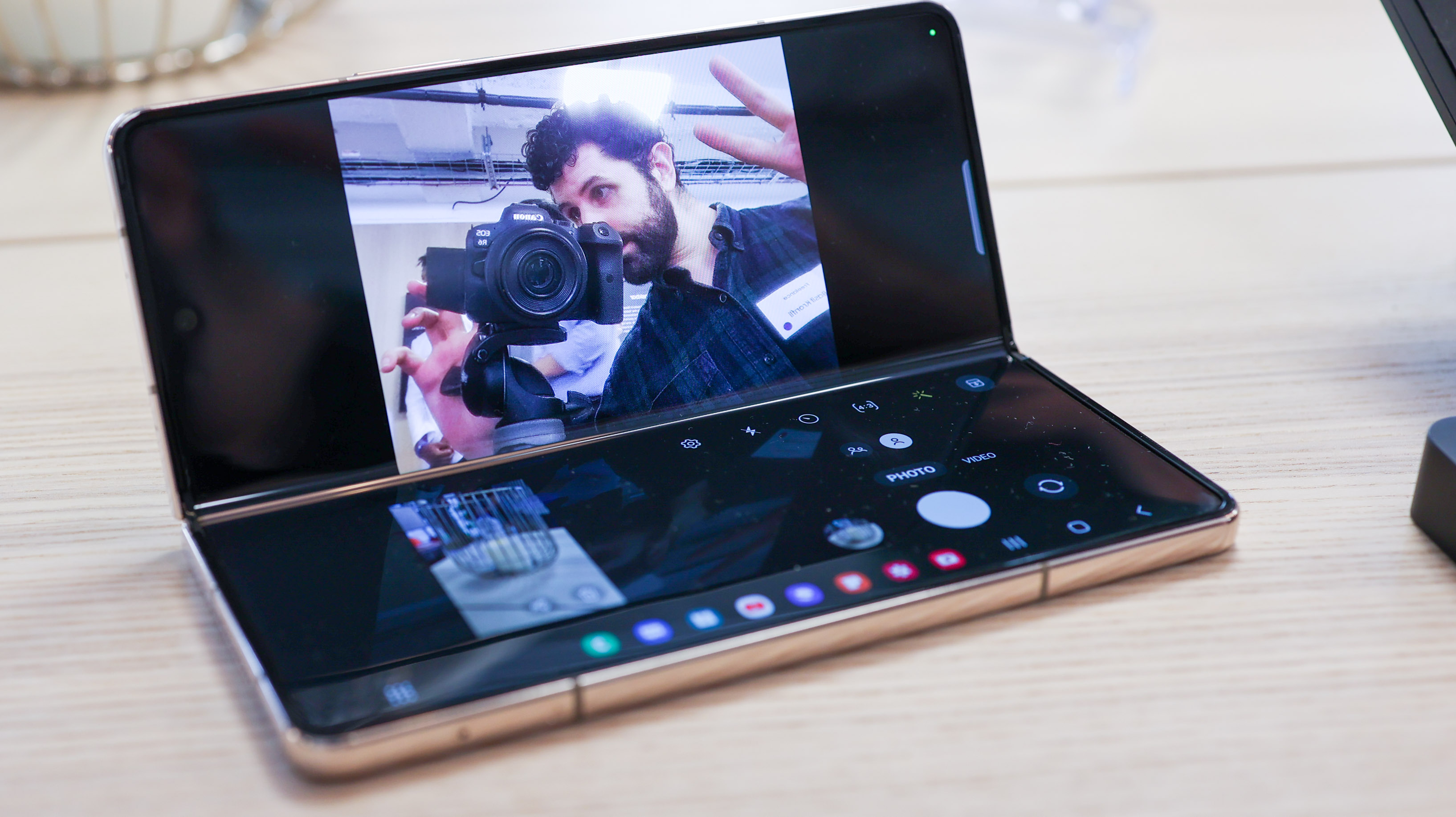
At Samsung's Unpacked event, when getting hands-on time with the new Galaxy Z Flip 4 and Galaxy Z Fold 4, a member of Samsung's team came up to me and asked which I preferred – the Flip or Fold. Their surprise was palpable when I replied, "definitely the Fold" – and I understood why.
The new Z Fold 4 doesn't stir feelings of nostalgia, it isn't a convenient, compact, stylish smartphone, and the refresh doesn't even seem all that upgraded when compared to the excellent Galaxy Z Fold 3.
When it comes to the cameras, the Fold and Flip are also nearing parity, with the Z Flip 4 getting a new, larger sensor with 1.8-micron pixels, and the f/1.8 lens has OIS. What is it about the Fold that should make every photographer want one? It definitely isn't its cameras.
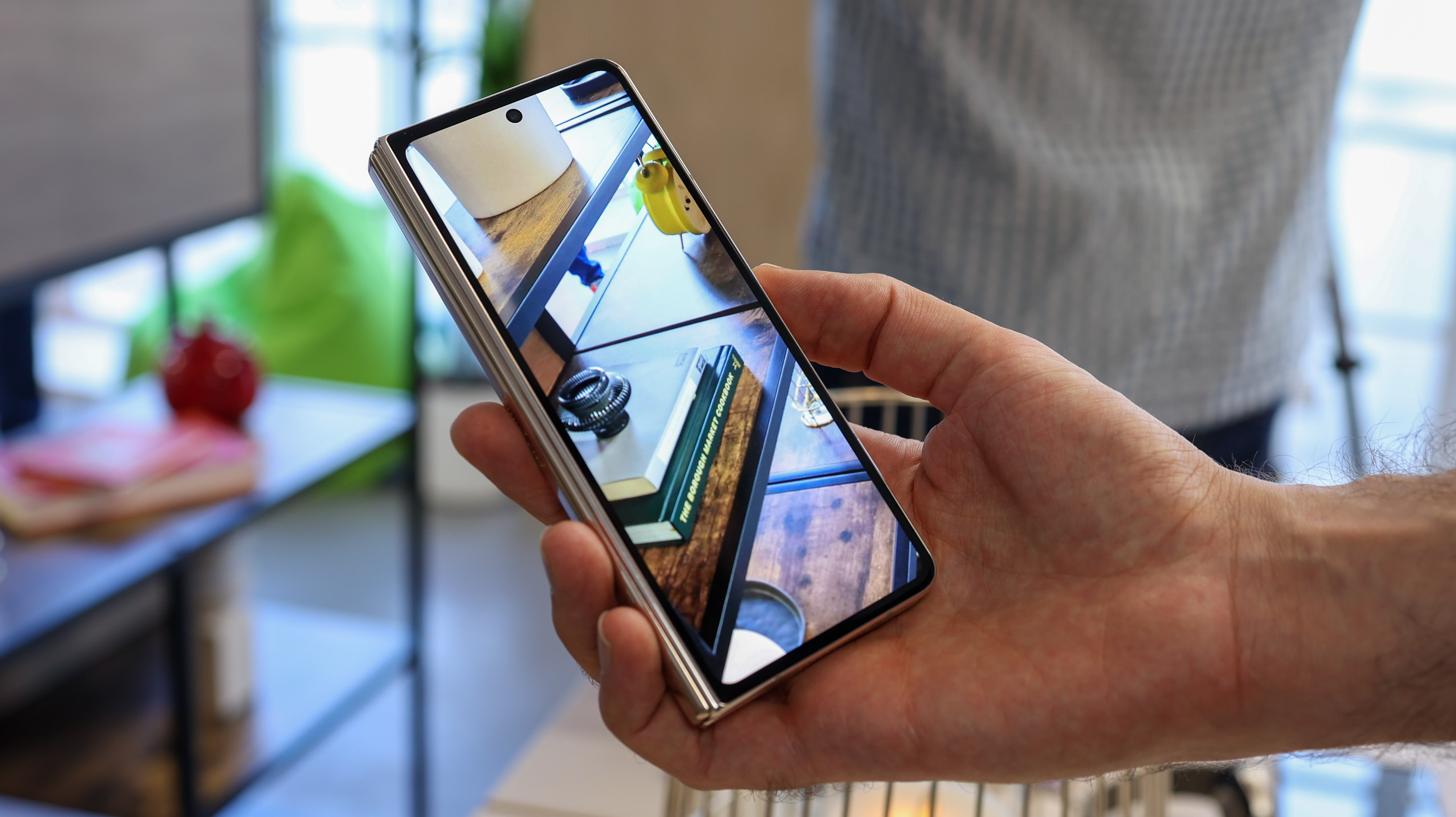
Yes, the cameras on Samsung's big-screened Fold are better than those of the Flip 4. It's got a virtually identical mix to that of the Galaxy S22 Plus, which took some great snaps when I tested it back in February. That means a 50MP main camera, a three times optical zoom, and a 12MP ultra-wide camera – in other words, iPhone 13 Pro levels of camera versatility.
To be honest, though, the camera hardware has nothing to do with the Fold being a photography champion – its cameras pale in comparison to those on the S22 Ultra and Xiaomi 12s Ultra. So what is it – the camera software? After all, the Galaxy Z Fold 4 camera app switches into a split-screen view when the phone's half-folded, so you can rest it on a surface and take advantage of slow shutter speeds.
There's also a smart dual-screen feature that lets you fire up both screens at once when taking photos. Perfect for capturing portraits of subjects who want to frame photos themselves, it gives them a preview on the cover display, while the photographer gets the big, tablet screen as their live view. As fun as all that sounds, though, it's got nothing to do with why the Z Fold 4 is so good for photographers.
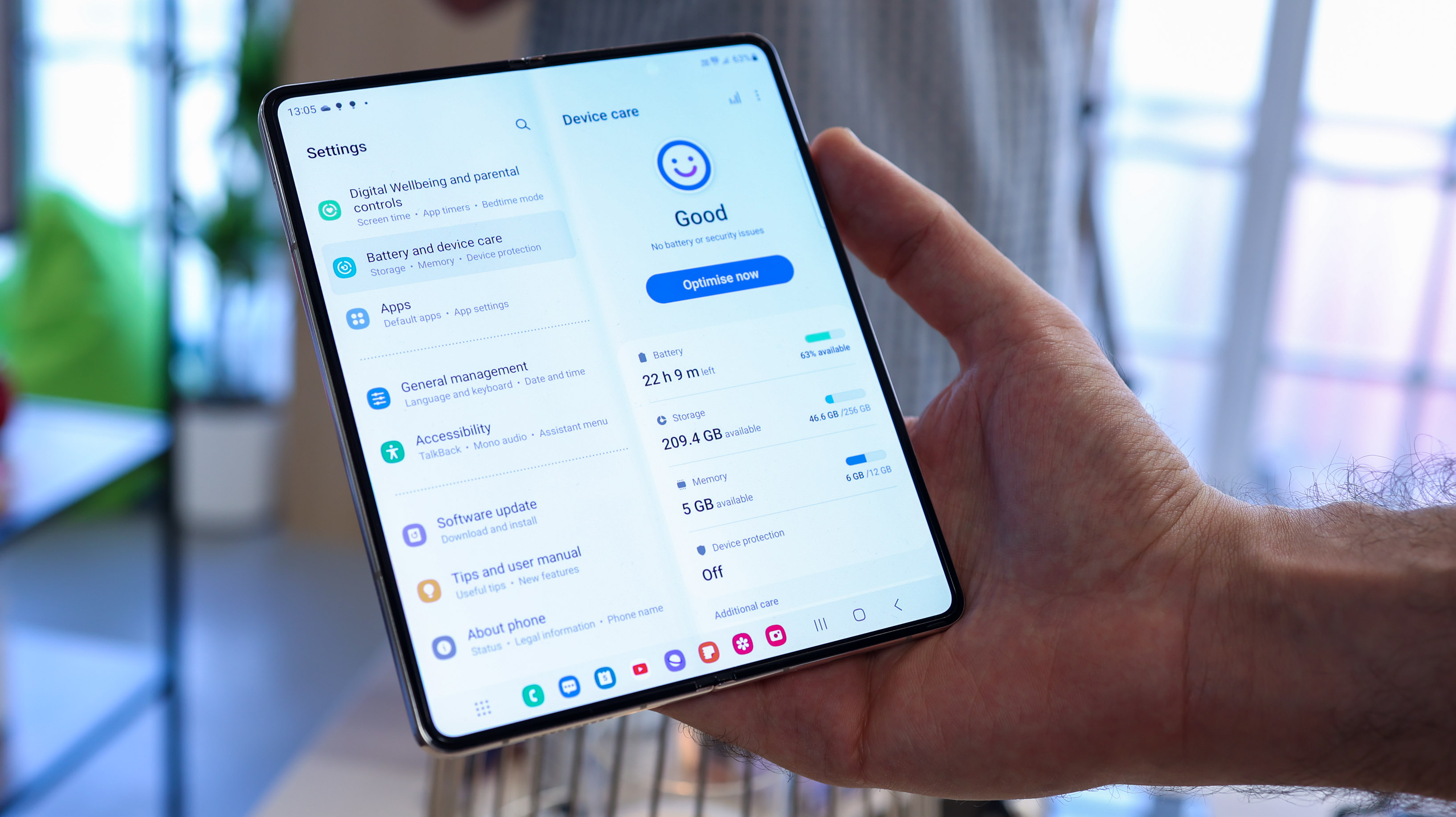
The Galaxy Z Fold 4's photography dominance over the Z Flip 4 and every other smartphone on the market is down to its 7.6-inch tablet display, its ample power and storage, and its S Pen support.
Get the Digital Camera World Newsletter
The best camera deals, reviews, product advice, and unmissable photography news, direct to your inbox!
Let's start with that big screen. With the best cameras for photography launching with Bluetooth and Wi-Fi, as well as companion apps that display a live preview, the Z Fold 4 is an incredible external display. I've been using the Z Fold 3 with my Canon R6 for months, firing up the Canon Connect app when in need of a bigger screen. Perfect in a pinch, while on a shoot after forgetting a micro HDMI cable, it did a fine job as a reference monitor while my Atomos Ninja 5 sat in my bag powered down.
Its size makes the Galaxy Z Fold 4 better suited to being an external display than phones like the Sony Xperia Pro, purely because it gives you more screen to see your preview on, and plenty of space for camera controls. Yes, the Wi-Fi connection can be patchy, and a wired option would be preferable. Nevertheless, it's a time-saving, excellent middle-ground solution.
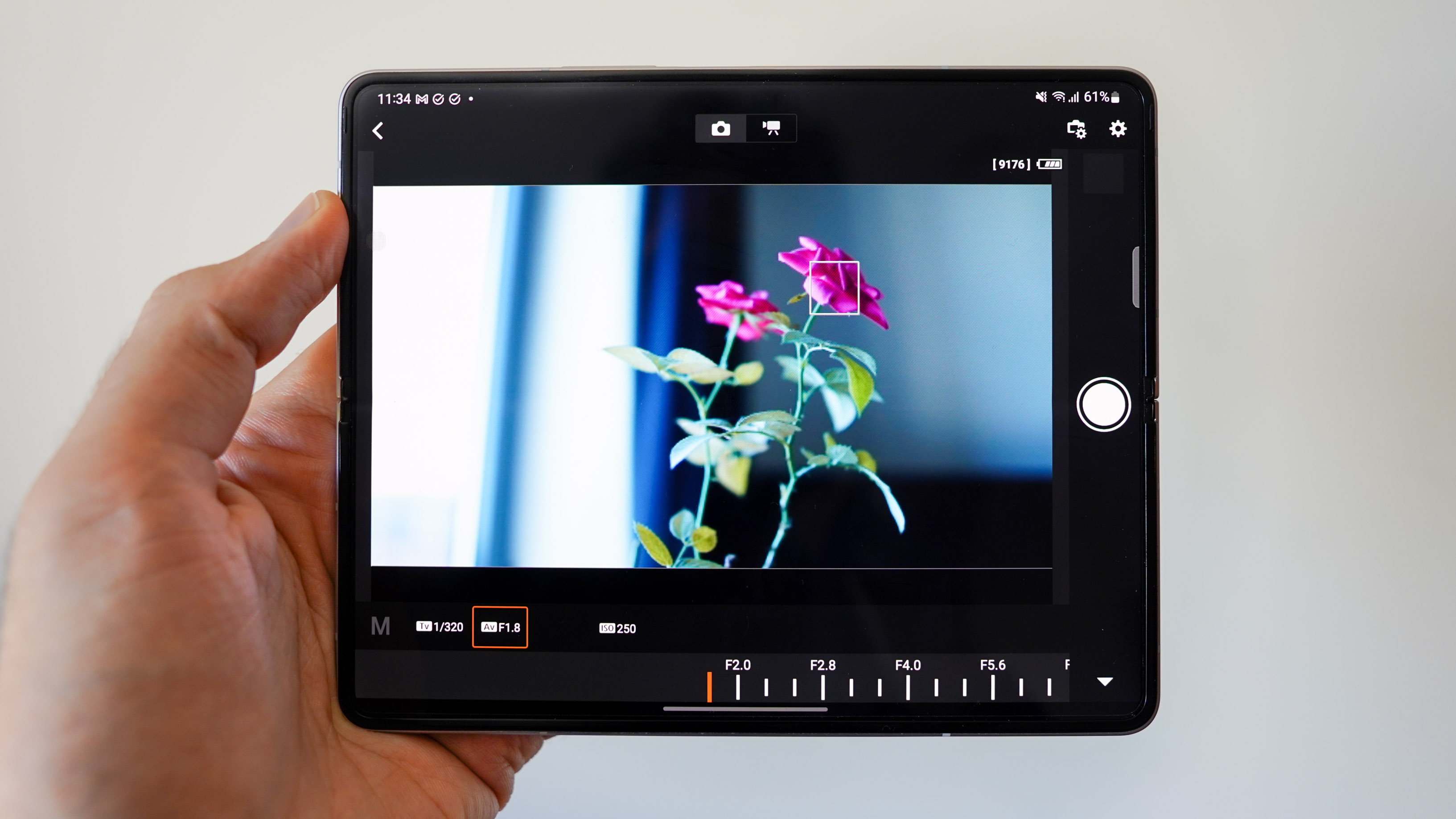
A live preview and companion app compatibility alone wouldn't make me pick the Z Fold 4 over more pocketable phones, though.
The Z Fold 3, and in turn, the Z Fold 4 has enough power, storage, and versatility to be an image editing suite on the go. This is largely thanks to Adobe Lightroom (pictured below), which looks beautiful on its ample foldable screen. It all starts with importing, and it's easy to get photos onto the Z Fold 3, with its USB-C connection at the base that works with low-cost, easy-to-find USB-C memory card readers.
Thanks to flagship-grade processing power, it's able to batch process images relatively quickly, with the S Pen, you can edit photos with more finesse than with a finger, and you won't run out of space quickly – the phone has 256GB storage as standard.
Samsung updates its OneUI software in its latest Galaxy Z Fold wedges in even more utility for photographers. Plug the phone into a monitor or TV, and it will fire up DeX, a desktop UI, which works brilliantly with keyboard and mouse integration. Lightroom also optimizes well to a big screen, as does Canon Connect. That instantly unlocks the Z Fold 4's capabilities even more for photographers and video shooters.
Then there's the new Windows-style taskbar Samsung has introduced on the Z Fold 4, which lives at the bottom of the screen. Created to make multi-tasking easier, this should give us even quicker access to apps we use regularly based on our brief time with the phone.
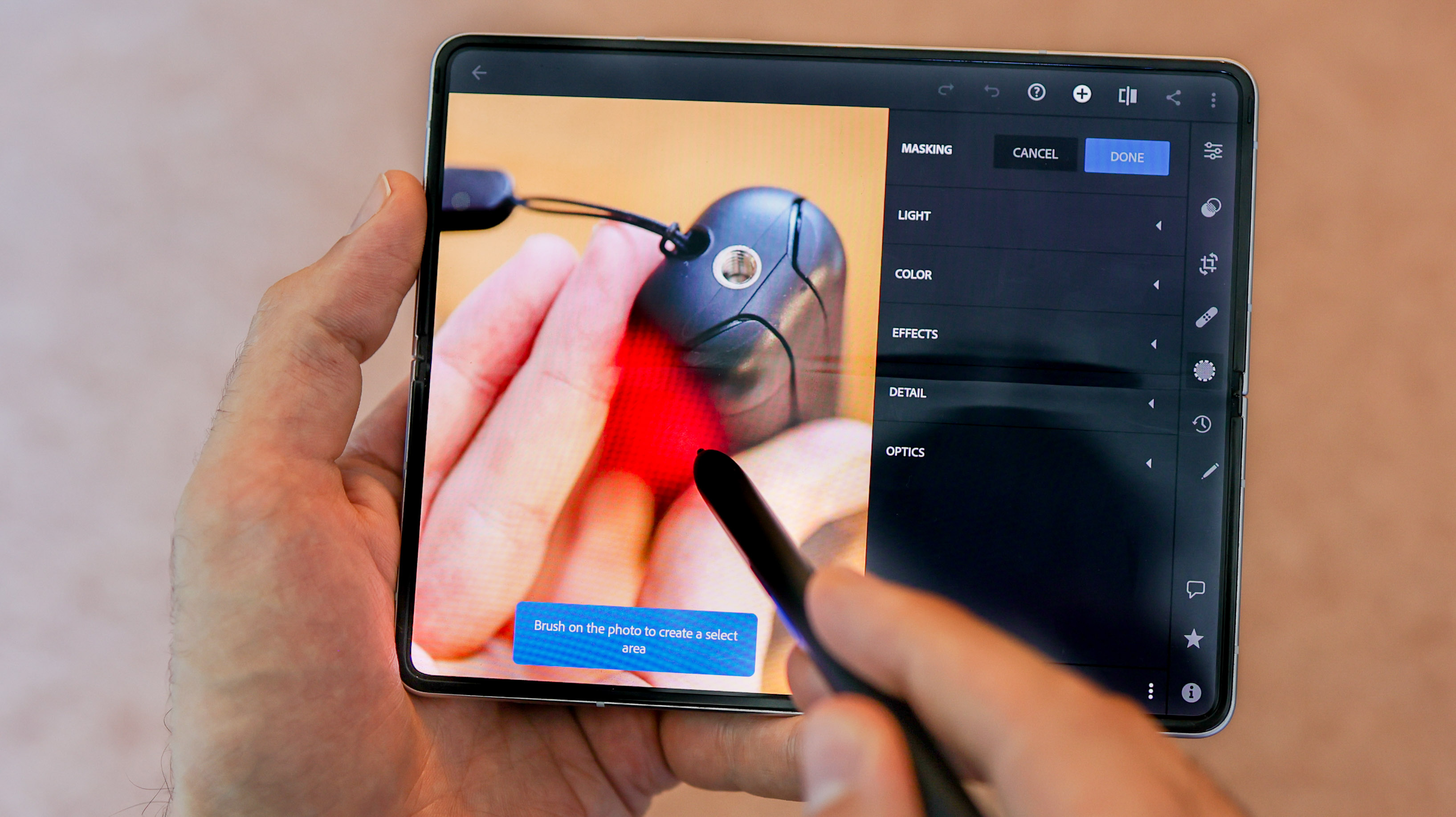
It goes without saying, there are some drawbacks to the Galaxy Z Fold phones, of course. The large, flexible display has a crease that does impact the visual integrity of images, and acts like a speed bump for the S Pen. The phone's also more unwieldy than traditional phones, and, most notably, it's very expensive, starting at $1,799 / £1,649 for the 256GB model.
Despite these caveats, new technologies seldom integrate as well into my workflow as the Galaxy Z Fold 3 has. With the new Z Fold 4's upgraded interface, slightly wider screens, lighter body, and boosted power, I'm optimistic it'll be another excellent photography phone for me, even if I don't plan on using its cameras all that much.
Read also
Best Samsung phones
Best fold phones & flip phones
Basil Kronfli is a freelance technology journalist, consultant, and content creator. He trained in graphic design and started his career at Canon Europe before moving into journalism. Basil is also experienced in video production, independently running the YouTube channel TechEdit, and during his time at Future, he worked alongside the Digital Camera World team as a senior video producer.

